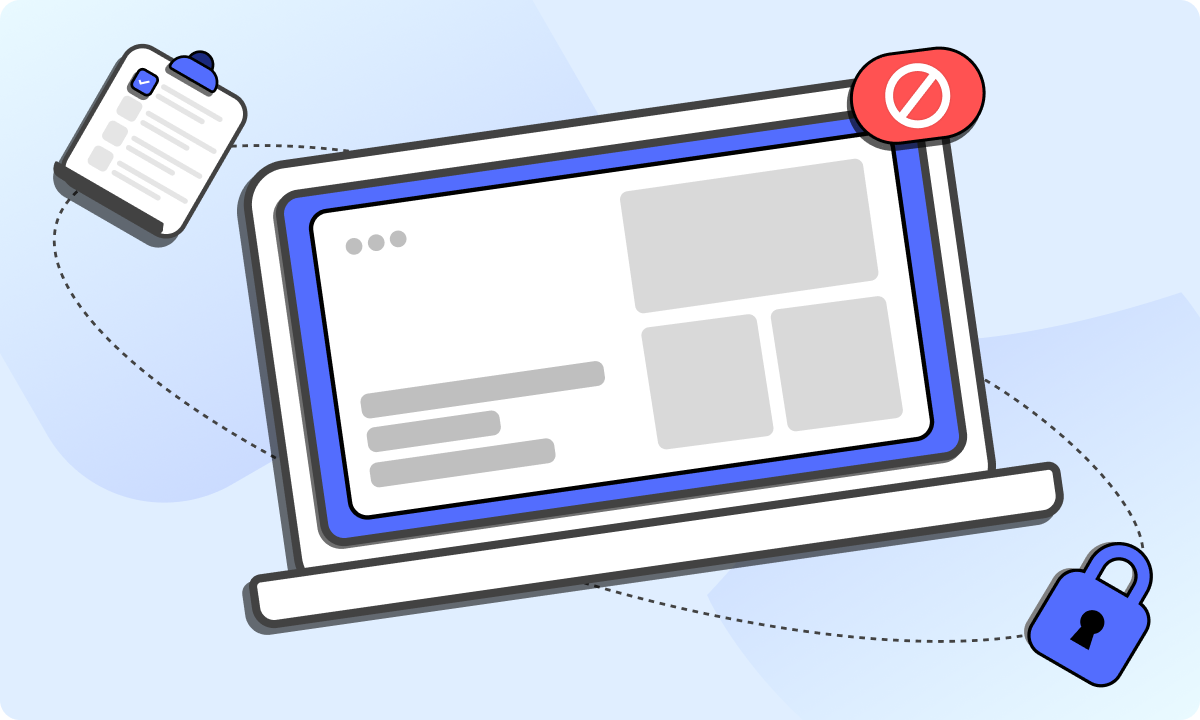Visualize yourself in a place where you can master a state of utmost concentration, focus and productivity free of the hundreds of micro-distractions plaguing your modern life. This is the philosophy behind Monk Mode – a strict work methodology drawing from the pre-distracted, monkish lifestyle. According to a poll made by job messaging site Blind, up to 45% of tech workers say they enter a flow state, a focused mental state of performance, for four hours or fewer per day, demonstrating the need for focused methodologies to boost performance and output. This guide will break down Monk Mode and how to use it to level up your productivity and life.
What is Monk Mode?
Monk Mode is a form of ‘super-productivity’ where you remove distractions from your life in order to focus intensely on whatever task stands before you. It adopts some of the methods of monkish life, and imagines that doing so will lift your work or study or whatever to new heights.
At its best, Monk Mode is a matter of eliminating distractions than of making choices. Other productivity hacks offer short-term gains, but Monk Mode promises deeper transformation. For example, setting goals – creating timeblocks, explicitly deciding what you’re going to work on before you sit down to work – can improve your ability to focus on truly important things, rather than on what’s merely urgent.
What is Modern Monk Mode?
Modern Monk Mode co-opts this classical practice for the context of the 21st century. Along with scheduled work sessions, social interactions limited to certain times and channels, and productivity software for maintaining flow, it balances deep work with the realities of its contemporary counterpart.
Modern Monk Mode is more realistic. It’s not something you have to do entirely, or any completely new way of living. You can set expectations for yourself, leave some time for other things that have to get done, and use technology as a tool to assist you in your quest.
What can you do with Monk Mode?
Monk Mode for any aspect of life can grant many advantages. Here’s how to use it effectively:
Monk Mode for students
Students can embrace Monk Mode to improve their learning. Getting rid of social media, computer games and other sources of distraction allows them to spend longer periods of time on academic work. As a result, they understand more material and are able to retain information for longer which will be reflected in their grades. This habit will also help them become more disciplined individuals in the long run.
Monk Mode for work
Professionals need a product to establish a distraction-free working environment. Setting Monk Mode at work means to avoid all unnecessary meetings and to disable all notifications. Employees who use this mode are feeling more productive because they are now able to concentrate on their work.
It will simply lead to work being done more quickly and to a higher standard. This is true regardless of your vocation. If you are a writer, a developer or something else that requires deep work, you can send the same signals to your colleagues by placing ‘do-not-disturb’ hours in your calendar, putting earbuds in with noise canceling capabilities, or reserving a particular space in your office for deep work.
Monk Mode for productivity
The objective of Monk Mode is to cultivate an environment that is ideal for deep work. Practitioners are able to focus solely on accomplishing critical tasks. This stark focus can result in frequent milestones being reached in a short span of time. With continued practice of Monk Mode, individuals can see striking increases in productivity. They are also able to achieve a more thoughtful approach to their work-life balance.
The side effect of such total immersion is that complex problems can often be solved quicker, and better. By excluding everything except what’s relevant, individuals replace ‘noise’ with useful information.
Monk Mode pros and cons
Benefits of Monk Mode
Implementing Monk Mode can have several advantages:
Increased concentration
This allows for deeper engagement in a task. Practitioners report that this quality of concentration often results in better and more creative solutions and a higher quality of work.
Better time management
Having a concrete time when you need to work on something can help to avoid procrastination and help you keep track of deadlines and what is important to you.
Greater productivity
You can accomplish your goals faster if you allocate uninterrupted time to work. For many, what previously took many hours can now be achieved in substantially less time, leaving more time for rest and leisure pursuits.
Mental clarity
Clear thinking can be really tough when you’re being distracted. In the absence of interruption, you’ll have more mental room to think and make wise decisions when juggling work and personal life.
Character-building
This forces introspection and self-discipline The self-imposed structure of Monk Mode helps cultivate traits such as, as Aristotle would say, ‘continence’ (self-control or the capacity to behave with restraint) and ‘resilience’ (the capacity to recover after a tough experience).
Problems with Monk Mode
Despite its benefits, Monk Mode has its challenges:
Isolation
As humans, we’re not designed to spend unbroken periods of time alone. While the intense focus periods imposed by Monk Mode can ultimately create a real sense of solitude, an unhealthy mental state could emerge if the periods of isolation are not balanced by periods of social interaction.
Unrealistic for certain occupations
This is not applicable for jobs that require regular human contact. Individuals with jobs that are customer-facing or one that necessitates constant collaboration will find Monk Mode impossible to implement.
Strict discipline
This strategy requires a lot of self-discipline, to the extent that not doing it strictly enough will prevent you from improving, and will likely frustrate you and sap your energy so that the whole practice backfires.
Burnout risk
Continuous focus without breaks can lead to fatigue. You burn out if you work too deeply for too long, without breaks, and this can adversely affect not just your productivity but also your health.
How to go Monk Mode
To make Monk Mode work for you, it helps to do it systematically with the right combination of goals, planning, time management and environment:
1. Identify your goals
Have a definite goal in mind. Whatever it is you want to do, whether it be to complete a project, prepare for exams, or simply for personal development, having a goal is the starting point of good Monk Mode practice.
2. Schedule your time
Block out hours in your calendar to work. Google Calendar and other tools can make it easy to focus your attention on deep work by allocating blocks of time and ensuring there are no overlapping events or meetings.
3. Eliminate the distractions
Limit your disruptive online activity. If you’ve got access to the web while studying, turn off social media, irrelevant sites and apps that can distract you because they’re fun. Decide what you are going to do, and then do it.
4. Create a dedicated workspace
Choose a quiet place and get yourself settled in a conversation-free area. Arrange your work area so that you have enough space to move things around and all your needed tools are easily accessible.
5. Set rules
Set business hours and behavioral codes for social and leisure encounters. Let your friends and family know of your time commitment, so they won’t bother you during your intense hours.
6. Monitor your progress
Record your success and modify your plan as necessary. Keep a journal or use digital tracking tools to keep a tally of what worked and didn’t work, so you can fine-tune your Monk Mode accordingly as you go along.
Monk Mode rules
In order to make it all the way through Monk Mode, you have to stick to the structure and the program:
Structure
Monk Mode’s structure is designed to reduce distractions and shape an environment conducive to deep work and focus, often through the establishment of specific goals. Maybe limiting social media, setting aside time for reading, going for a run, learning a new language, whatever. Creating a framework enabling consistent progress while avoiding behaviors that detract from your goals.
Schedule
It’s helpful to set a schedule in advance, because this gives you defined time slots for each task or goal you want to achieve. Maybe you wake up early, have set time periods to work on specific tasks, have regular breaks that you take on schedule, and so on. This type of daily routine helps you build habits that keep you on track and practice your discipline until it becomes a second nature.
Tools that help focus on Monk Mode
There are several tools that you can use to maintain your focus while in Monk Mode:
BlockSite
BlockSite blocks time-wasting websites and apps, helping you to stay on track. It can work across multiple browsers and on mobile phones, and it allows you to specify time slots for blocking distracting sites.
Noise-canceling headphones
You don’t want interruptions, so muffle the background noise. These can help you block your ears from audio distractions, which just might improve your ability to focus deeply.
Task management apps
You can also use apps such as Todoist or Trello to organize tasks and priorities. These tools help you visualize your tasks, deadlines, and priorities, so you can easily stay on track.
Pomodoro Timers
It can also help to break work into spurts with short breaks in between, to keep your attention levels and endurance high, and to use the Pomodoro technique of time management to avoid burnout.
Meditation apps
Using meditation apps like Headspace can help to reduce your stress and improve your mental clarity. Incorporating short meditation sessions into your Monk Mode practice go a long way towards keeping your mental balance and making it easier to deal with stress.
Monk Mode productivity tips
Here are some practical tips to effectively adopt Monk Mode into your life:
1. Go slow
Don’t do it all at once. If you bombard your system with a sudden influx of stress, you will likely end up in a pile on the floor clutching your head screaming. Instead, start slow and gradually increase your Monk Mode a bit at a time.
2. Take regular breaks
Use the Pomodoro method, for example, to stop work from grinding you down. Short, regular breaks are a good way to ensure you can keep a high level of focus over longer periods of time.
3. Track your progress
Keeping a journal is one way of tracking your progress, and one of the best ways to give yourself credit for your achievements.
4. Mindful practice
Use mindfulness exercises to sharpen your focus and lower your stress. For example, deep-breathing exercises or short meditation breaks can help you keep your mind clear.
5. Manage your environment
Organize your workspace by minimizing clutter or anything that could distract you. A tidy environment can help facilitate focus and avoid disruptive distractions.
Ready to transform your productivity?
Monk Mode is all about maximizing productivity and achieving your goals in life – personal as well as professional. When you are disconnected from the noise around you, and are working on something meaningful, you feel more clarity, more confidence and healthier.
BlockSite can help you by blocking time-wasting sites and apps so you can fully immerse yourself in this period of full focus. Try Monk Mode and get your productivity and quality of life rocking!





